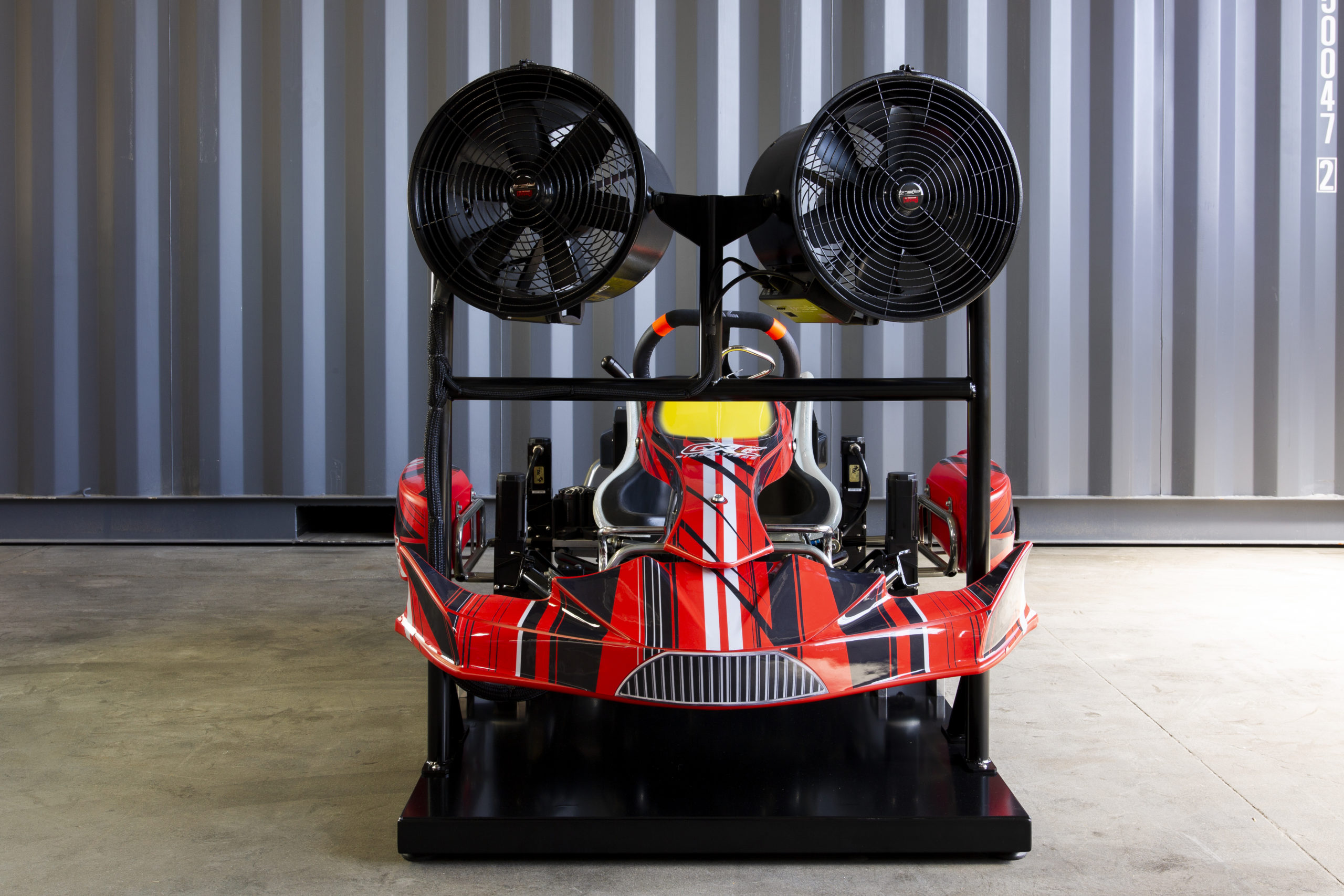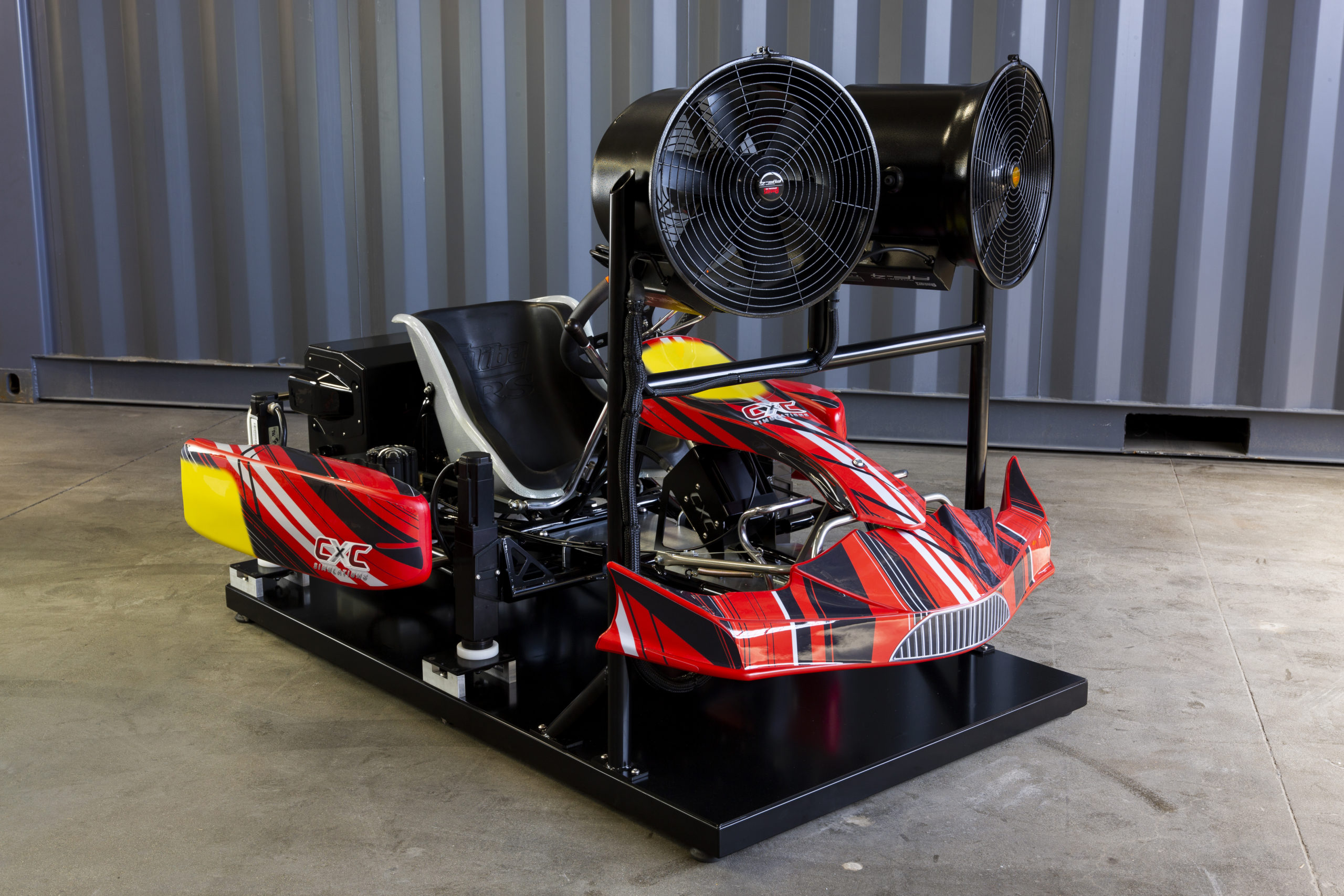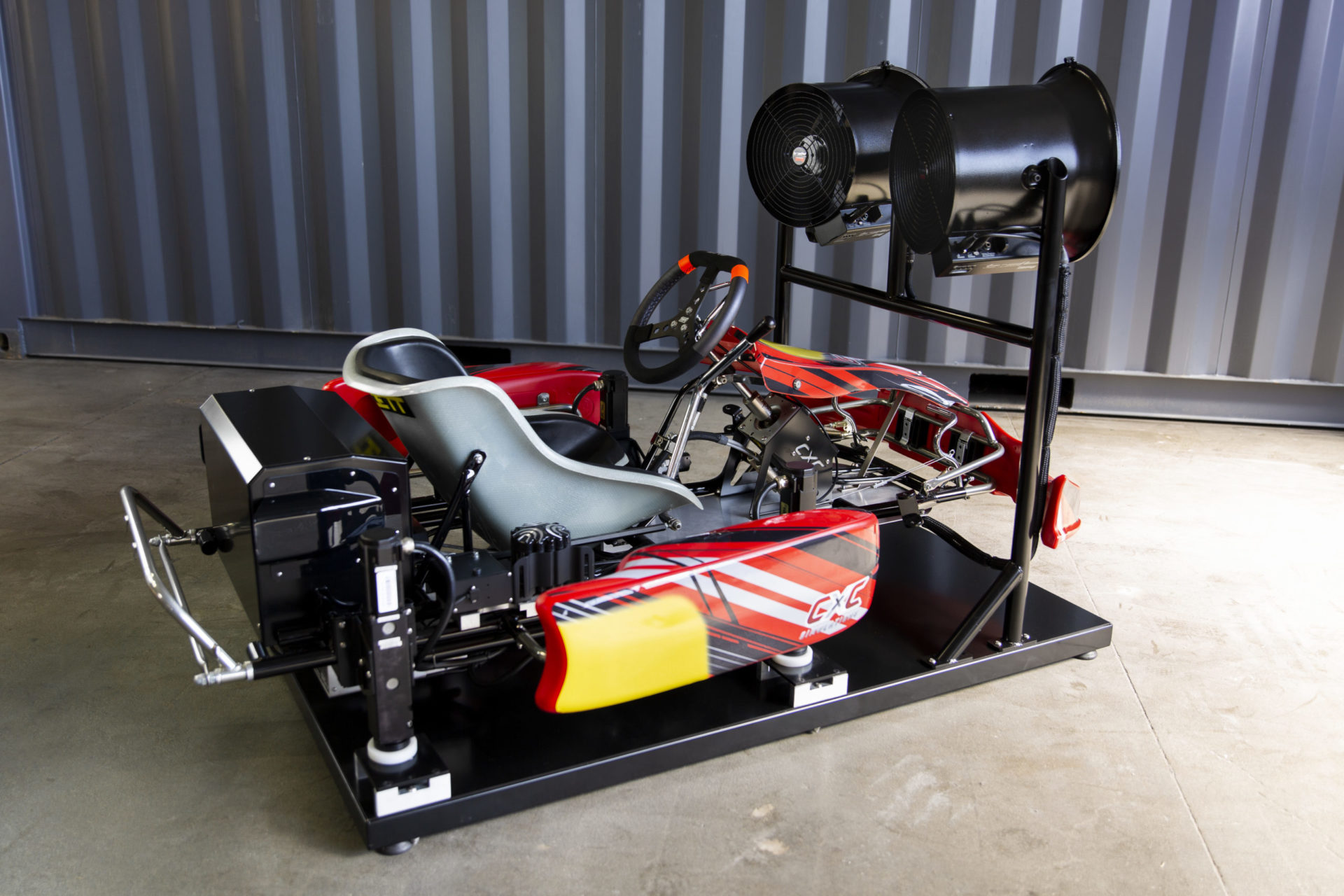A go-kart might be the most exciting vehicle you can drive. There’s a reason that nearly every professional driver not only begins their career in karts but uses them as a way to stay sharp in the off season. What makes karts so intense is the incredibly direct driving experience that they offer – with no suspension or differential, the driver’s input and the feedback from the road is incredibly direct.
Which made us wonder – could you build a realistic karting simulator? As a technical exercise, we decided to try building a karting simulator that captured all of the feelings of racing a kart.
Our Special Projects team set about utilizing everything they know about motion, Virtual Reality, and haptic feedback to build the most realistic karting simulator possible. The goal was the same as all the other racing simulators that we build – to accurately replicate the sensation of driving a car (or kart, in this case) on the racetrack.
Getting the feel right was the goal, and this required coordination of all of the technologies that we utilize in our regular simulators.
Getting the seat-of-the-pants feel to be accurate for a kart presented many new challenges. First, we had to take into consideration that all of the forces that are exerted on the body – steering force, chassis motion, wind – are more violent in a kart than in a car, we needed to replicate these sensations in a very safe way. With the absence of any suspension, a kart requires the driver’s inputs to be very precise and sensitive.
In a kart, the driver attacks the corners much harder than they typically would in a car, because they are trying to load the chassis to lift the insider tire. This is the sort of detail that takes a long time to get right because an experienced karter will know right away if it doesn’t feel right, and required extensive testing and tuning of our motion control system, the actuators and the software package.

Similar to our full-motion Formula 1 and Radical projects, we built the simulator with a kart chassis which provided accurate chassis dynamics as well as the correct seat and steering position. While the packaging is very tight, we incorporated our custom force-feedback steering system and a hydraulic braking system. Our motion control system drives actuators on the corners of the chassis.
And more so than in any race car, in a kart the driver is almost completely exposed, so the sensation of being in the wind is a key part of the experience of driving a kart. To accomplish this, we utilized a Virtual Reality headset and high-powered fans, using software that we created in order to control them.
The final key was tailoring the motion software to match the feeling of a kart. A kart simulator requires much higher level of precision than a car simulator because the feedback is so direct that you really feel every minute change in the road’s surface through your hands and seat.

“This was a blank slate project for us at CXC Simulations,” said Chris Considine, Founder and CEO of CXC Simulations. “This project was conceived as a technical exercise for our team. Since this is not a product we planned to sell, nor is it something we had done before, it pushed us out of our comfort zone both in design and execution. And the team delivered – it is an amazing simulator to drive. Every experienced kart racer who we have had try it was skeptical at first and has come away amazed.”
CXC Simulations specializes in in custom simulator projects, whether it’s based on our Motion Pro II or a completely custom, one-off project like the kart simulator. Get in touch with us to discuss the simulator of your dreams.

